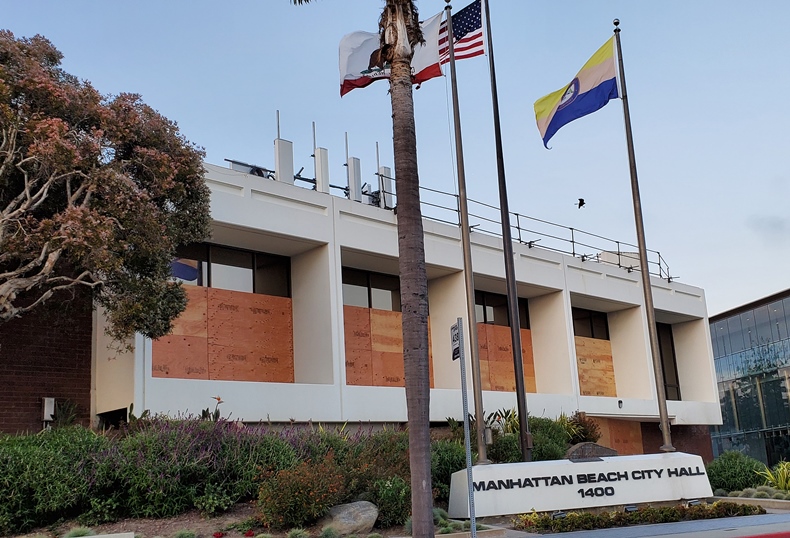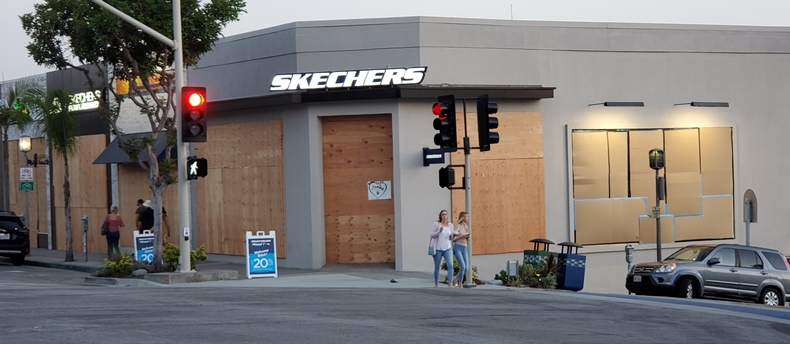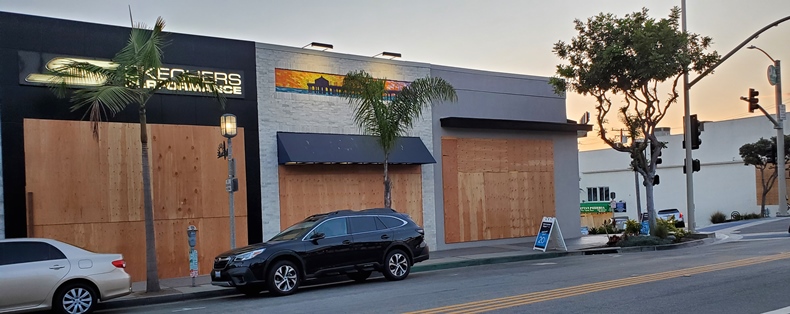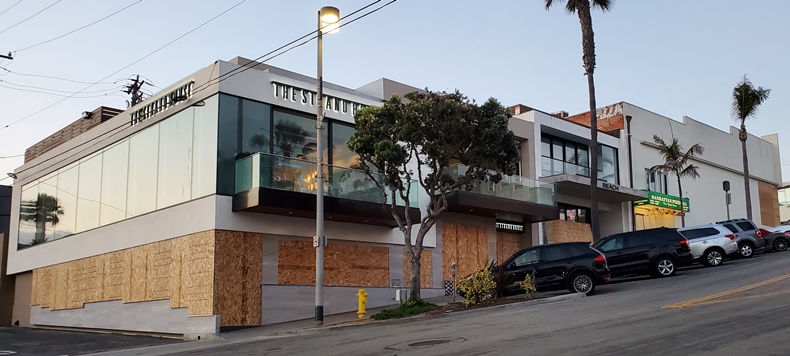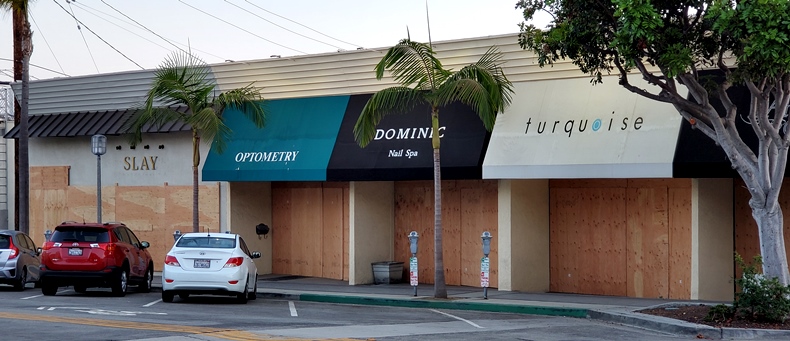For the Class of 1960, the spring of 2020 was unlike anything we've ever witnessed in almost 80 years of living. First a pandemic spread across America after the Covid-19 virus hitchhiked from its birthplace in Wuhan, China with travelers. By June 1, 2020, almost two million Americans had been infected by the virus and more than 100,000 Americans had died from its effects. Worldwide, the Covid-19 death toll by June 1 was rapidly approaching the half-million mark. Those numbers are increasing every day at this writing. Governments all across the United States and in many other countries around the world ordered lockdowns to reduce the spread of the virus, with all "non-essential" businesses closed. Restaurants, bars, clubs, gyms, hair salons, places of worship and many other entities were ordered to close. Concerts, sports events and other gatherings (including our planned 60th Reunion) were postponed. Schools and colleges were closed to all but online instruction. Proms and graduations were canceled. Air travel dwindled to less than 10 percent of what is normal for this time of year. Unemployment reached levels unprecedented since the Great Depression of the 1930s as businesses that were forced to close reduced their workforces. "Social distancing" was mandated, with people ordered to stay six feet away from everyone except members of their own households. In many places people over 65 were ordered to self-isolate in their homes because older people had much higher Covid-19 mortality rates than the young.
Just as those lockdowns were being eased and some businesses were being
allowed to reopen, a new kind of lockdown happened. In
Minneapolis, MN on Memorial Day, four police officers were attempting
to arrest an African-American man named George Floyd when one of the
officers, a Caucasian, pinned Floyd down by placing a knee on his
neck. Floyd said "I can't breathe" and died while being
restrained. A video of the incident was circulated widely,
triggering worldwide protests, many of which started out
peacefully but resulted in violence. The protests, though a
direct result of George Floyd's death, raised larger systemic issues in
society.
During the last week of May protests turned violent in hundreds of
places from coast to coast.
From Manhattan across the continent to Manhattan Beach, the effects
were felt. The iconic flagship Macy's department store at Herald
Square in New York--often called the world's largest store--was looted
and ransacked in a night of violence, a scene repeated across America, stirring
fear everywhere. Much closer to home, by Sunday, May 31, numerous
businesses had been vandalized and looted in Long Beach. On
Monday, June 1, there were rumors that marchers were planning a
protest event in Manhattan Beach. Many merchants in the South Bay
boarded up their newly-reopened stores in the face of a new perceived
threat, fearing an epidemic of violence on top of the epidemic of
disease. Manhattan Beach City Hall was also boarded up, as shown
above. By Tuesday, the businesses and the cities were
ready. A crowd estimated at 1,000 people gathered at the foot of
the Manhattan Beach Pier at noon that Tuesday (June 2), carrying signs. To
everyone's relief, the march was peaceful and there were no
arrests. The crowd marched to Hermosa Beach, then returned
and dispersed in Manhattan Beach. Police ordered the last
group of protesters to leave shortly before a county-wide 6 p.m. curfew and they
complied.
Here are a few photos of what Manhattan Beach and Hermosa Beach looked
like during this second lockdown. Christi McCaverty, the daughter
of our classmate Jimmy McCaverty and a gifted photojournalist, gave us
permission to use some of her photos of Tuesday's march. I (Wayne
Overbeck) drove around town Wednesday night and took the plywood photos
with a cellphone camera. The final photo appeared in The Beach Reporter's
excellent coverage of Tuesday's march.
By the June 6-7 weekend many businesses were removing their plywood
barriers and reopening again, subject to the county's regulations
governing the original lockdown to reduce the spread of the Covid-19
virus. At the same time, however, there were ongoing
demonstrations--in Manhattan Beach and elsewhere--over the issues
raised by George Floyd's death. -Wayne Overbeck
| |||||||||
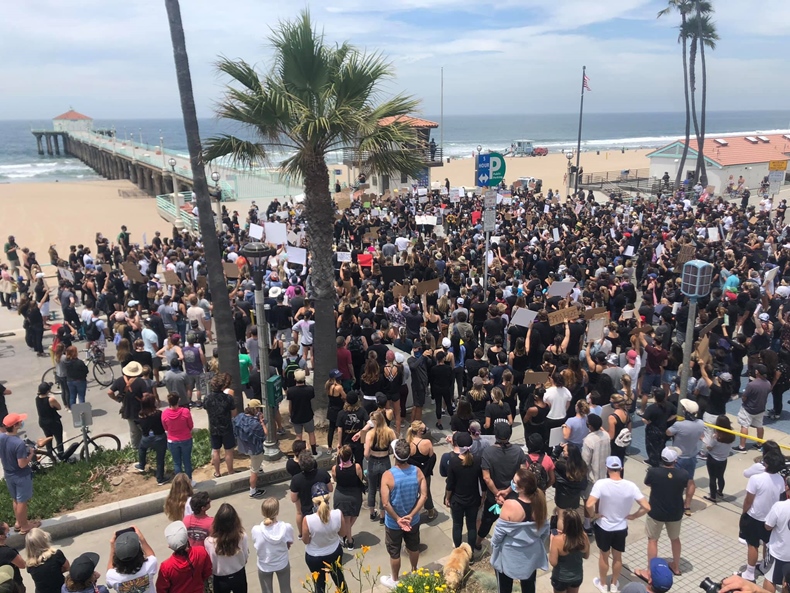 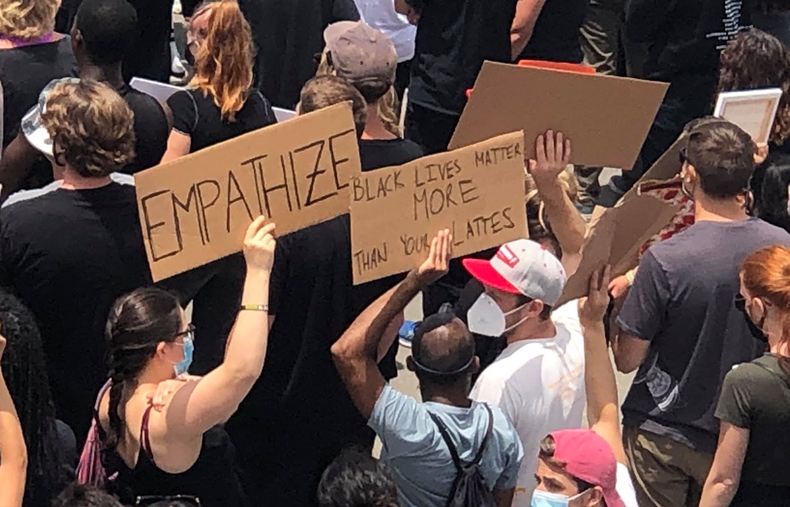 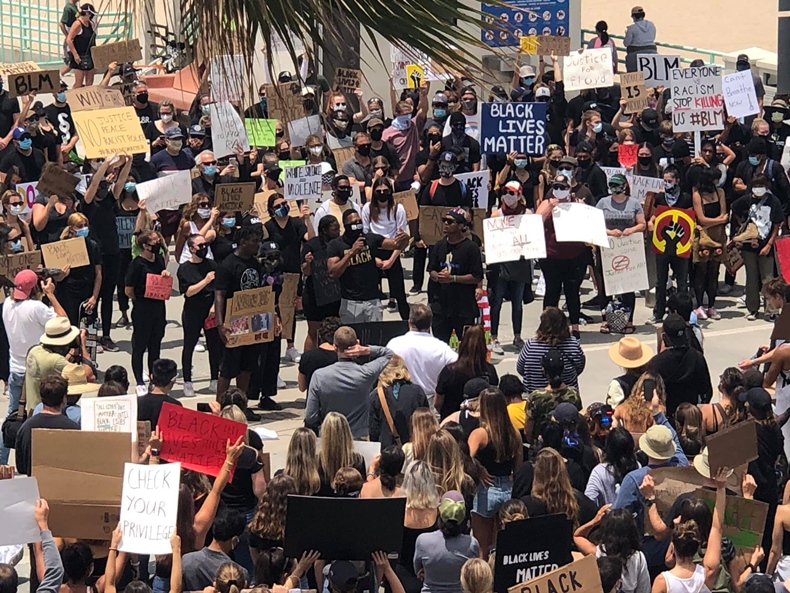 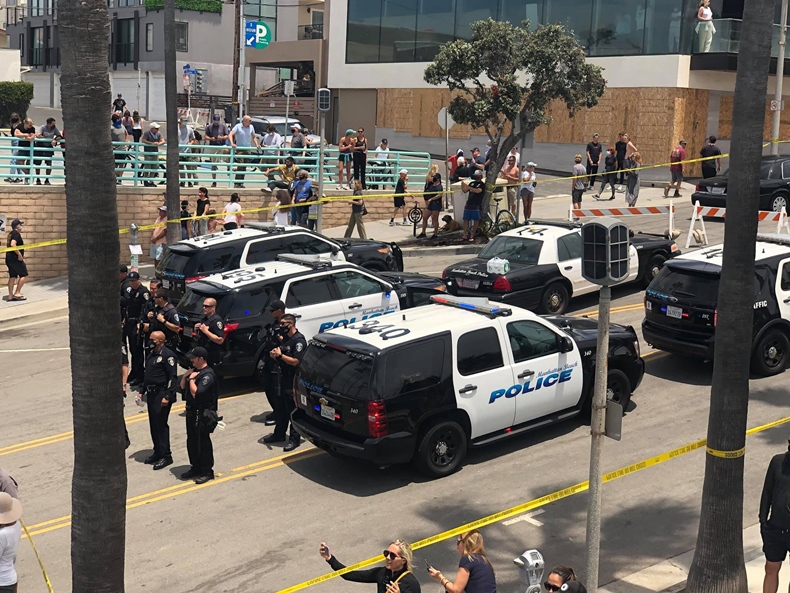
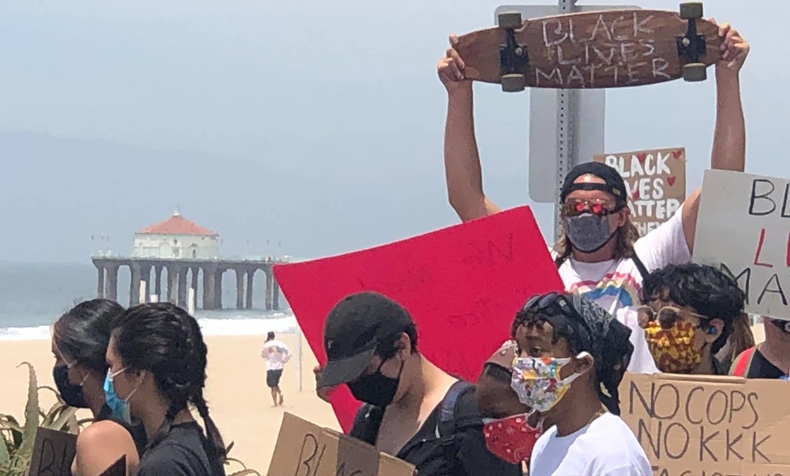
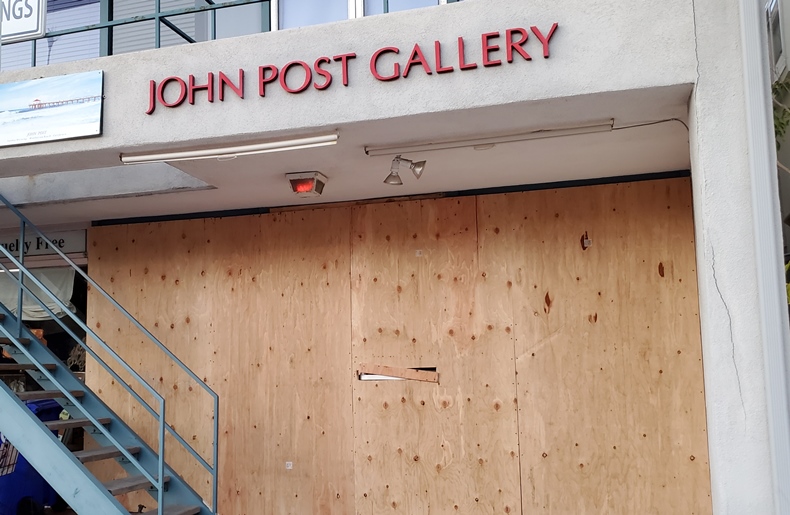 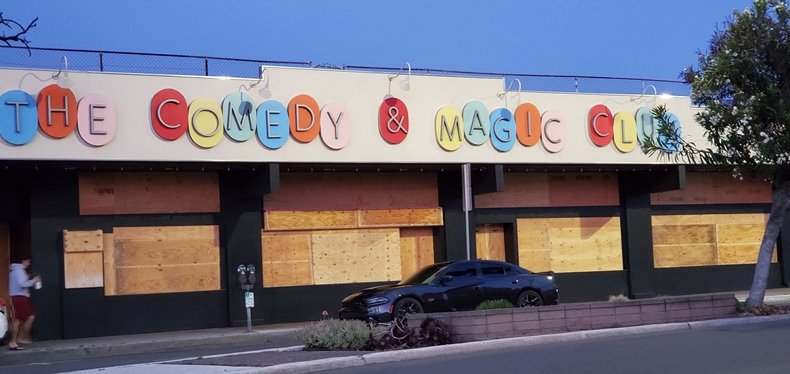 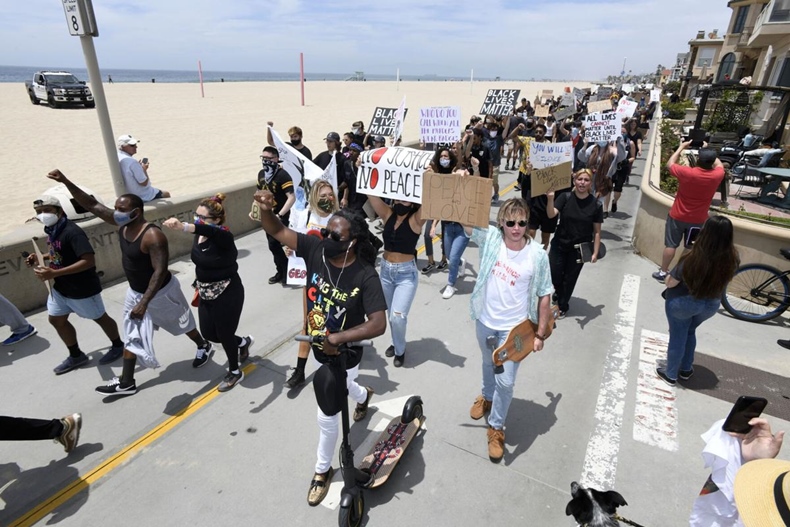
.
|
|||||||||
